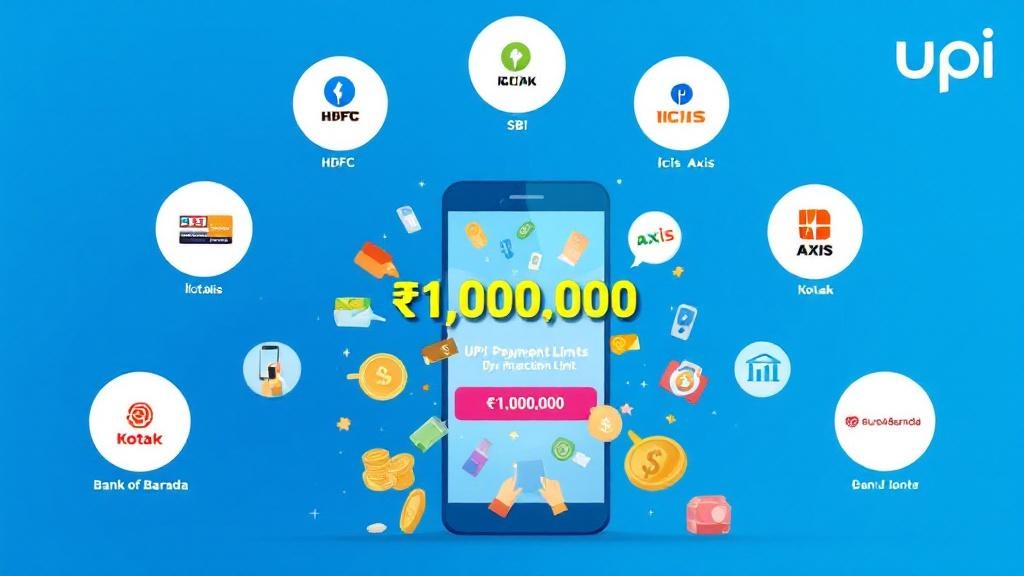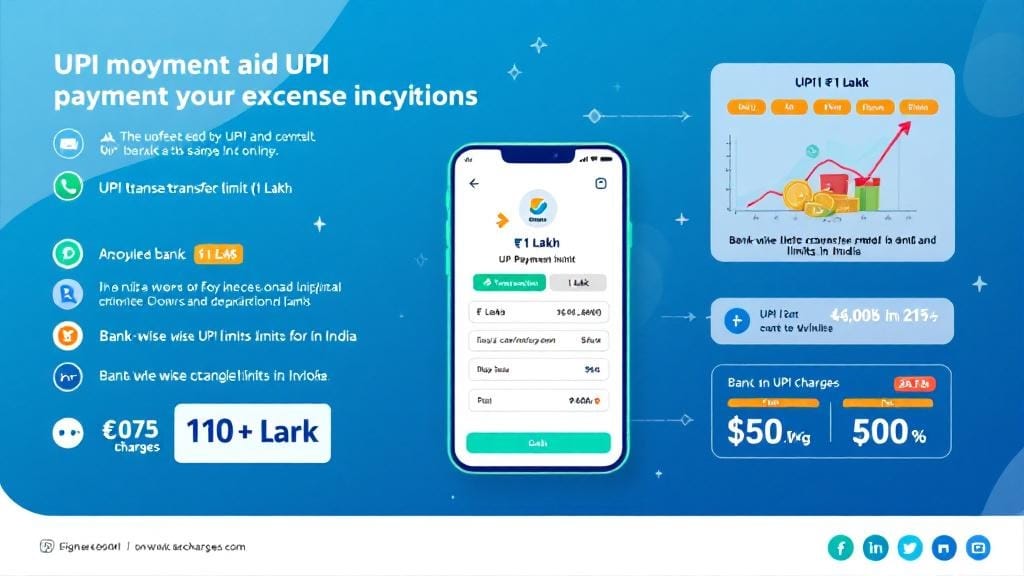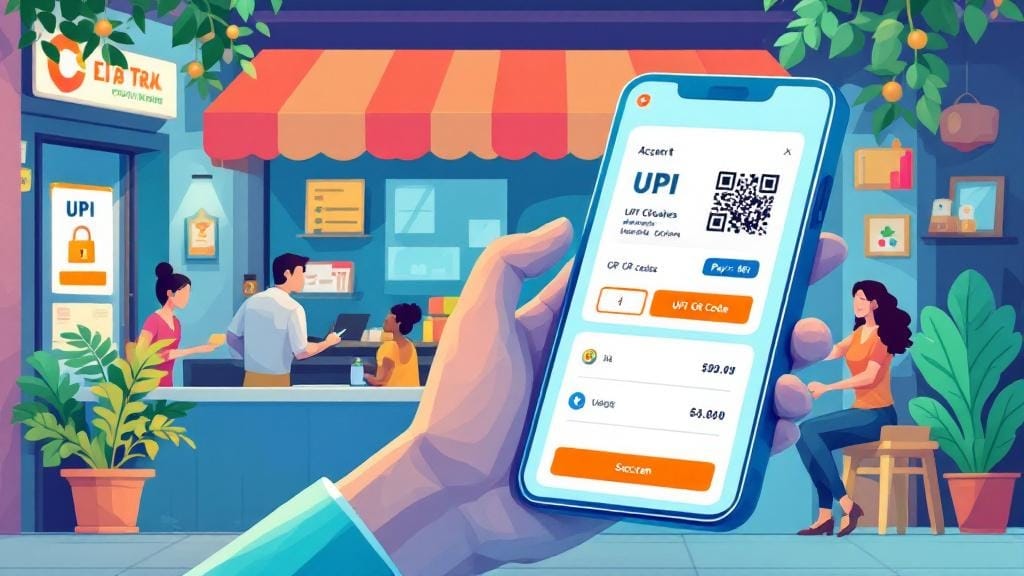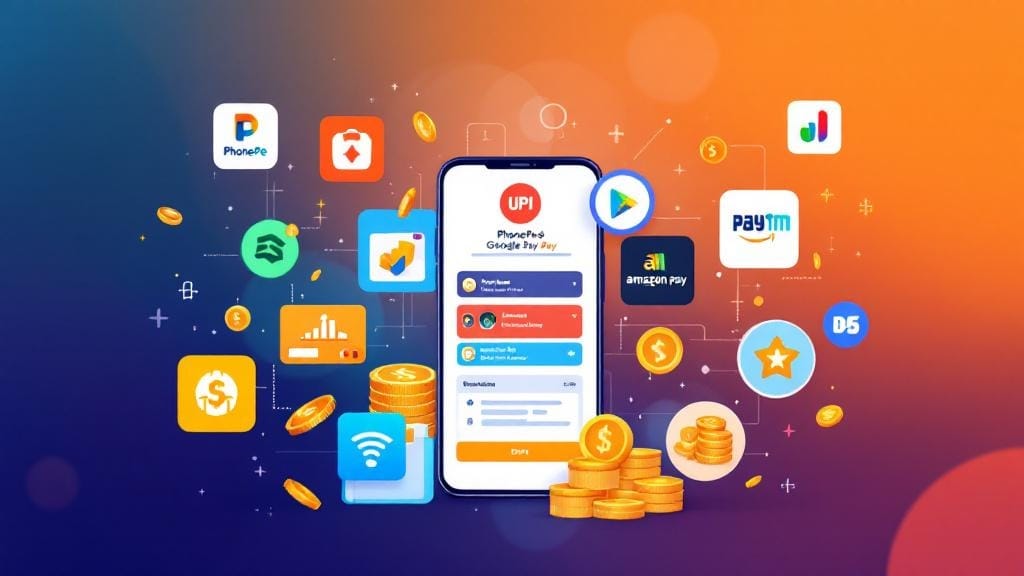Unified Payments Interface (UPI) has revolutionized the way Indians conduct digital payments. Thanks to UPI, transferring money between different bank accounts has become as easy as sending a text message. However, UPI transactions come with limits, which vary depending on the bank, the UPI service provider, and even the type of transaction. In this article, we’ll break down everything you need to know about UPI limits by bank and how to navigate these restrictions.
What is UPI and Why Are There Limits?
Before diving into bank-wise UPI limits, let’s first understand the basics of UPI. UPI is a real-time payment system developed by the National Payments Corporation of India (NPCI). It enables users to transfer money instantly between bank accounts using mobile phones and apps, with the ease of a single-click transaction.
However, to ensure the system’s security and prevent misuse, UPI transactions come with a cap. These limits are set by banks as well as NPCI and are designed to protect users from potential fraud while maintaining system stability.
UPI Limits by Bank: How They Differ Across Institutions
When using UPI for digital payments, different banks may impose different limits based on their internal policies and the services they offer. Here’s an overview of UPI limits for some of the top banks in India:
HDFC Bank UPI Limit
HDFC Bank, one of India’s leading private-sector banks, offers a relatively generous UPI limit to its customers. The standard maximum UPI transfer limit is ₹1,00,000 per day for individuals.
Key Points:
UPI Transaction Limit: ₹1,00,000 per day
Peer-to-Peer (P2P) Transfer: Allowed within the limit
Peer-to-Merchant (P2M) Transfer: Also allowed, subject to the same limits
HDFC Bank also supports instant money transfers, making it a popular choice among UPI users.
SBI UPI Limit
SBI (State Bank of India), being the largest public sector bank in the country, has its own set of UPI limits. The maximum transfer limit for UPI transactions with SBI is ₹1,00,000 per day.
Key Points:
UPI Transaction Limit: ₹1,00,000 per day
Instant Payment: SBI supports instant UPI transfers for both peer-to-peer and peer-to-merchant transactions
Multiple Transactions: Users can conduct multiple transactions throughout the day, as long as they stay within the daily limit.
ICICI Bank UPI Limit
ICICI Bank’s UPI limit is also ₹1,00,000 per day, making it one of the more convenient banks for high-value UPI transactions. ICICI supports both P2P and P2M transfers.
Key Points:
UPI Transaction Limit: ₹1,00,000 per day
Multiple Payments: You can make several transactions, but the total amount shouldn’t exceed the daily limit
Secure Transfers: ICICI Bank incorporates several layers of security to prevent fraud in UPI transactions
Axis Bank UPI Limit
Axis Bank offers its customers a daily UPI limit of ₹1,00,000. With Axis Bank, you can transfer money for both personal and business purposes, as long as the total doesn’t exceed the daily cap.
Key Points:
UPI Transaction Limit: ₹1,00,000 per day
P2P and P2M Transfers: Axis Bank supports peer-to-peer and merchant transactions
Daily Transfer Cap: You can make several UPI transactions, but the combined amount shouldn’t exceed ₹1,00,000
Kotak Bank UPI Limit
Kotak Mahindra Bank, another popular private bank, offers a daily UPI limit of ₹1,00,000.
Key Points:
UPI Transaction Limit: ₹1,00,000 per day
Instant Transfers: Kotak also supports instant peer-to-peer and peer-to-merchant transfers
Daily Cap: Keep in mind that your total daily UPI transfers shouldn’t surpass ₹1,00,000.
Bank of Baroda UPI Limit
Bank of Baroda, a well-known public sector bank, also allows UPI transfers up to ₹1,00,000 per day.
Key Points:
UPI Transaction Limit: ₹1,00,000 per day
P2P and P2M Transfer Limits: You can transfer money instantly to anyone, be it for personal or business purposes, as long as it doesn’t exceed the daily cap.
Understanding UPI Transaction Cap Per Day
While the UPI limit may differ from bank to bank, the general cap for most banks is ₹1,00,000 per day for both peer-to-peer (P2P) and peer-to-merchant (P2M) transfers. If you need to transfer more than this amount, you will need to either:
Make multiple smaller transactions throughout the day
Consider other modes of payment that allow higher limits
UPI Transfer Rules by Bank: Important to Know
While the basic UPI limit remains consistent across most banks, there are additional rules that banks follow:
Transaction Time: UPI allows 24/7 transactions, but some banks may have restrictions on timing during maintenance hours.
UPI Service Providers: Banks can partner with different UPI apps like BHIM, Google Pay, PhonePe, etc. This may impact the available transaction limits, depending on the service provider.
Digital Payment Restrictions: Banks may impose digital payment restrictions on certain types of accounts (e.g., student or junior accounts).
Transaction Authentication: All UPI transactions require authentication using a UPI PIN, which enhances security and reduces the risk of fraud.
FAQs on UPI Payment Limits and Transfers
1. What is the maximum UPI limit for HDFC Bank?
HDFC Bank offers a UPI transaction limit of ₹1,00,000 per day for both peer-to-peer and peer-to-merchant transfers.
2. Can I transfer more than ₹1,00,000 using UPI?
No, most banks impose a daily cap of ₹1,00,000. However, you can make multiple smaller transactions throughout the day as long as they don’t exceed the cap.
3. Is there a difference between P2P and P2M UPI transfer limits?
Generally, the UPI limit applies to both P2P and P2M transfers. The daily cap of ₹1,00,000 applies to both types of transactions, unless a specific bank sets different rules.
4. What happens if I exceed the UPI limit?
If you exceed your UPI limit, your transaction will fail. You will need to either reduce the amount or make multiple transactions.
5. How secure are UPI transactions?
UPI transactions are highly secure. Banks use encryption, two-factor authentication, and UPI PIN to ensure that each transfer is protected against fraud.
6. How do I increase my UPI limit?
Increasing your UPI limit generally requires an upgrade in your account type or a request to the bank. Some banks may offer higher limits based on your account balance, usage history, or relationship with the bank.
7. What is NPCI’s role in UPI limits?
The National Payments Corporation of India (NPCI) sets the overarching rules for UPI transactions, including transaction limits. However, individual banks can set their own limits within these guidelines.
Conclusion
Understanding UPI limits by bank is essential for anyone who regularly uses UPI for digital payments. While the standard limit is generally ₹1,00,000 per day for most banks, the specifics may vary slightly depending on the bank or UPI service provider you use. Always make sure you’re aware of your bank’s rules and transfer limits to avoid any surprises during your transactions.
As UPI continues to evolve, it’s important to stay updated with any changes to transaction caps and rules. By doing so, you can make the most of this fast, secure, and convenient way to transfer money.








Comments (0)